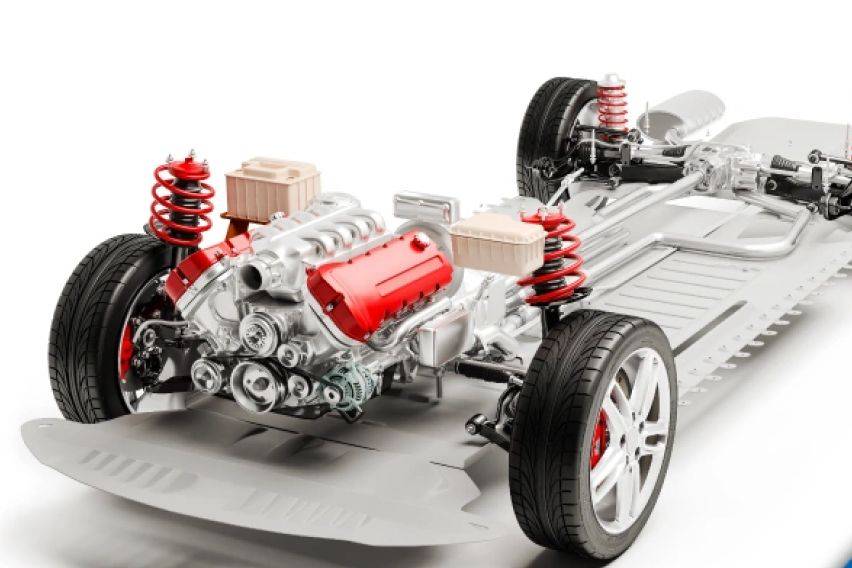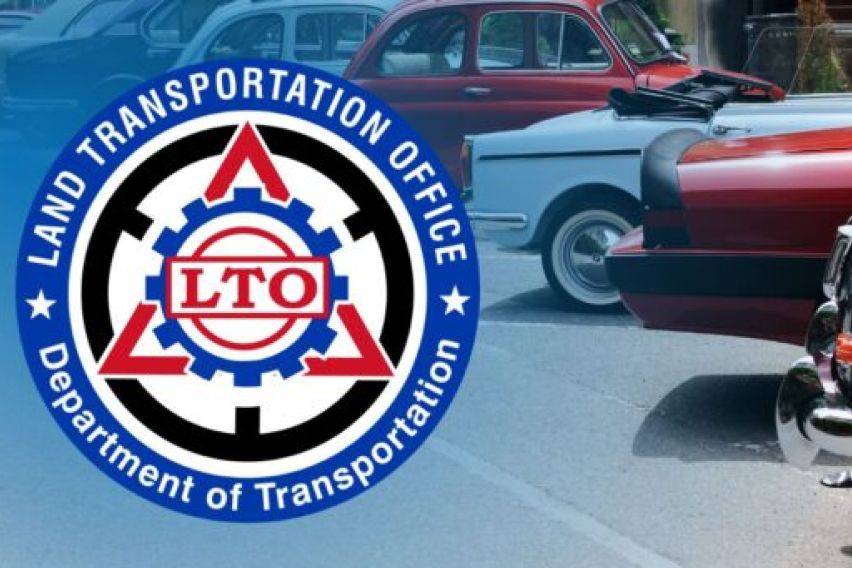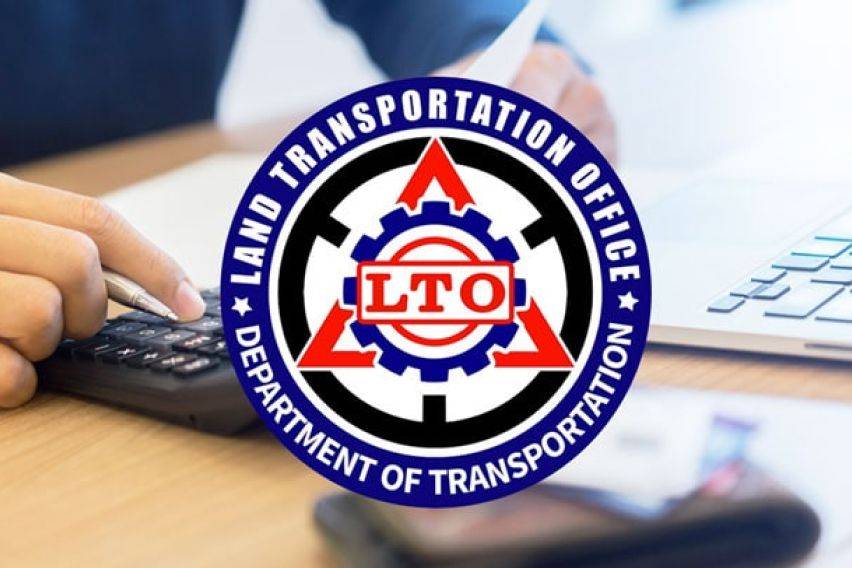LTO vehicle modification guide: Changing the vehicle's chassis

- KEY TAKEAWAYS
- What is a car chassis?
- LTO and chassis modification
- Advantages to changing the chassis of a vehicle
- Qualification to change the chassis of a vehicle
- Documents required to change the chassis of a vehicle
- For Private Vehicle
- For Hire Vehicle
- For Vehicles under Chattel Mortgage
- For Vehicles owned by a single proprietor
- For Vehicles owned by a corporation
- Process of applying to change the chassis of a vehicle
- LTO fees for chassis modification
- Important things to remember
We are almost at the end of our LTO vehicle modification guide series, with modifications to the colour, body, and engine already discussed. Now it is time to discuss a rather uncommon change i.e., chassis change. However, before moving forward with the LTO regulations and requirements for chassis modification, let us first understand what chassis refers to.
KEY TAKEAWAYS
What are some of the restrictions with chassis modification?
While LTO allows vehicle chassis modification, however, it should not lead to any change in the vehicle’s freight or addition to lengthWhat documents are required to apply change in vehicle chassis?
The list of documents varies with the class of change, the type of vehicle, along with other conditions. However, there are a few common requirements like the original PNP-HPG Motor Vehicle Clearance Certificate, Special Bank Receipt, duly accomplished original MVIR, Macro-etching report etc.Where shall I file my application for a change in vehicle chassis?
It can be done at any LTO office, extension office, district, whichever is convenient.Is it legal to modify a car in the Philippines?
Yes, it is completely legal to modify a car in the Philippines, however, the change must be declared to the LTO by applying to change.Also Read: LTO Vehicle Modification Guide: Transforming your vehicle's body
What is a car chassis?
First things first, the pronunciation, it’s pronounced as cha-see and not otherwise. Now that you know how to say it, let us understand what a car chassis is.

A car chassis is the very foundation/skeleton of a car. From being made out of wood in the late 1800s, car chassis have come a long way. Since the entire car is built on the chassis and bears all the weight of the car’s body and its parts, the chassis is made of steel. It includes the following parts -
- Tyres
- Engine
- Transmission
- Brakes
- Steering Wheel
- Suspension
- Axle system
The car chassis is a crucial part on which the rest of the vehicle is built. It is therefore recommended to thoroughly check the chassis when buying a car (especially a second-hand unit).
Also, the cars available these days follow unibody construction, unlike the cars until the mid-1990s that featured a ‘body-on-frame’ construction. While the latter had the car body built onto a chassis, the former built the chassis and frame as a single unit, leading to a durable end product.
Also, you need to understand the difference between a car chassis and a frame. While the former is referred to as the skeleton that takes on the car’s weight, the latter is the rest of the car fitted onto the chassis. Understand it like, the chassis is the muscle and the frame is the skin on top of the muscle.
Need to change/modify/replace a car chassis
Despite the chassis being a crucial element, it is often neglected until there is damage in the form of a badly worn or completely broken part. If not checked timely, it puts the driver, pedestrians, and others on the road at potential risk. This is one of the reasons to modify/change/replace the chassis. Also, there are cases where it is an individual's choice to enhance the car’s aesthetics.
LTO and chassis modification
Whatever the reason for changing the chassis, it might lead to one of the following -
- Flexing of the chassis at weird places
- Structural integrity and rigidity getting compromised
Thus, forcing the LTO to interfere and make sure the revised car with the modified chassis is fit to go on the road. The officer in charge will run physical inspections and tests on the vehicle to check its roadworthiness along with ensuring the safety of the driver, passengers and other operators.

Overall, such modifications in the vehicle need permission from the LTO and only after a green signal from the agency can a driver drive the vehicle on the public road.
Also Read: LTO vehicle modification guide: Transforming your vehicle's colour
Advantages to changing the chassis of a vehicle
Apart from rectifying a broken part or fulfilling one's car upgrade preferences, there are several benefits related to chassis modification.
- Helps modify the car as per owner’s speed and performance preference
- Expands the car’s lifespan
- A longer chassis can add length to your existing car, leading to more space
- Being able to change other parts for a better look and feel, which was otherwise not possible with the original chassis
- Chassis modification saves money as it involves checking parts for wear and tear, thus saving the owner from a sudden breakdown
Qualification to change the chassis of a vehicle
The only eligibility criteria for a vehicle owner to change the chassis is that the concerned motor vehicle must be registered with the LTO. However, LTO will allow such change when -
- Firstly, all the required documentation must be submitted to the authorities
- Secondly, payment of all the relevant LTO fees

Documents required to change the chassis of a vehicle
For LTO to allow car modification due to a change in the car’s chassis there needs to be submission of certain documents by the owner of the concerned vehicle. So, if you are someone thinking of modifying the car chassis here’s the list of documents that you should prepare in advance -
- Certificate of Registration(CR)/ Certificate of Registration-Encumbered (CRE) with conformity from the financing company interposing no objection to the chassis change - Original & one photocopy
- Philippine National Police - Highway Patrol Group (PNP-HPG) Motor Vehicle
- Clearance Certificate - Original
- Special Bank Receipt
- Macro-etching report
- Motor Vehicle Inspection Report (duly accomplished)
- Appropriate insurance Certificate of Cover (COC)/ Endorsement of insurance - LTO Copy or electronically transmitted
Along with the above-mentioned general requirements, a few additional requirements are depending on the vehicle type and other conditions.
For Private Vehicle
- The latest original Official Receipt & Certificate of Registration of payment
- Original copy of Sales Invoice of Chassis
- Affidavit of Change of Chassis
- Clearance from Philippine National Police-Traffic Management Group (PNP-TMG)
- Taxpayer’s Identification Number (TIN)
- Actual inspection of the motor vehicle with duly accomplished MVIR
- Confirmation of Dealer’s Report from Regional Office/Registration Section
For Hire Vehicle
- The latest original Official Receipt & Certificate of Registration of payment
- Original copy of Sales Invoice of Chassis
- Affidavit of Change of Chassis
- Clearance from Philippine National Police-Traffic Management Group (PNP-TMG)
- Taxpayer’s Identification Number (TIN)
- Motor Vehicle Inspection Report (MVIR)
- Copy of Dealer’s Report duly authenticated by the Assistant Secretary with Official Receipt
- Confirmation of OR/CR (if issued by another LTO agency)
- Confirmation of Franchise from the Land Transportation Franchising and
- Regulatory Board (LTFRB) with a copy of the Decision/Order
For Vehicles under Chattel Mortgage
- Official Receipt (OR) issued by the Registry of Deeds
- Chattel Mortgage Contract duly annotated by the Registry of Deeds
For Vehicles owned by a single proprietor
- Registration of Business Name issued by the Department of Trade and Industry (DTI)
For Vehicles owned by a corporation
- Board Resolution or Secretary’s Certificate
Process of applying to change the chassis of a vehicle
To change/modify the chassis of a motor vehicle, the owner is required to apply with the LTO office. Like all other LTO transactions, this one too is pretty straightforward and requires the owner to follow the below-mentioned test and submission of required documents. Here is a step-by-step guide -
Step 1: Head to your nearest LTO office
Step 2: Get the queue number from the person in charge and wait for your turn
Step 3: Proceed to the transaction counter when your queue number is announced
Step 4: Submit the required documents for evaluation and computation of the fees
Step 5: Get your vehicle inspected with a duly accomplished Motor Vehicle Inspection Report
Step 6: Proceed to the cashier window with the MVIR and wait for your number to be called
Step 7: Pay the fee and get your Official Receipt
Step 8: Head towards the Releasing Counter
Step 9: Present the OR at the counter and collect your new Certificate of Registration, plates, stickers, and other documents
Step 10: Before leaving, sign the CR logbook

LTO fees for chassis modification
An applicant needs to pay the necessary fees at the LTO to register the modification done to the vehicle. So, the applicant needs to pay PHP 100 as the chassis change fee along with other LTO fees that would be the PHP 100 chassis change fee like the Motor Vehicle User’s Charge and more.
Important things to remember
- All types of modifications (be it engine, body, body design, etc) need to be inspected by the LTO to ensure the roadworthiness of the vehicle
- Chassis change is an optional procedure and can be done at any LTO office nationwide
- Chassis modification must not lead to a change in the vehicle’s freight or addition to length, as it may affect the vehicle’s handling, rigidity, and stability
Bottom line
The chassis is the base on which the entire vehicle is built and therefore any modification done is quite a tricky affair. It should not be too long or heavy, as both will affect the vehicle’s handling and stability, leading to the potential risk of an accident. Also, completely ignoring the chassis is not a wise decision as you might miss out on a worn-out part which again is dangerous. And it is for the same reasons that LTO heavily regulates vehicle modifications.
Also Read: LTO Vehicle Modification Guide: Changing the engine unit
Featured Articles
- Latest
- Popular
Recommended Articles For You
Featured Cars
- Latest
- Upcoming
- Popular
Car Articles From Zigwheels
- News
- Article Feature
- Advisory Stories
- Road Test
